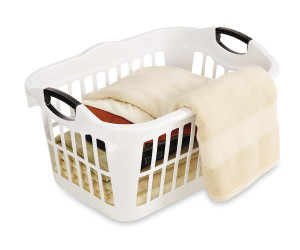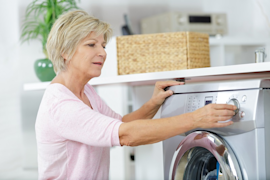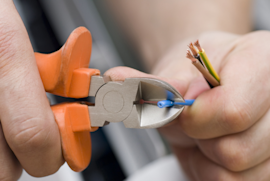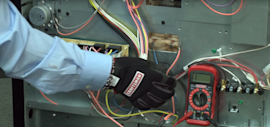7 tips for cleaner clothes


Doing the laundry is a chore we all have to deal with, but if not done correctly, clothing can come out of the washer looking like you've spent an entire day doing nothing more than getting your clothes wet.
We have a few basic tips on how to get your laundry as clean as possible, making the time spent on laundry well worth it.
Deal with stains immediately. Don't let a stain dry into the fabric, as it will be nearly impossible to remove afterwards. As soon as something has spilled onto the fabric, scrape off any excess and then rinse it with water. Launder the item as soon as possible to prevent permanent staining.
Read the label. Garment manufacturers put them there for a reason. Follow the recommendations on the label for water temperature and cycle settings to avoid damaging your clothes.
Sort your laundry not only by color, but also by fabric and cycle type. This level of sorting may seem like added work, but the time spent on sorting your clothes is worth the financial investment you've made in your clothing.
If you have a soap dispenser, use it—it mixes the detergent and water in the right time. If your washer doesn’t have a dispenser, add detergent to the washer first, then your laundry so the detergent dissolves in the water first, making it much more effective at cleaning.
Don't use too much soap; follow the manufacturer's recommendations on how much detergent to use, using less if you have soft water.
Don't overload the washer. Overloading the washer prevents proper agitation, resulting in dirty clothes. It could also cause the washing machine to become unbalanced and could even damage the machine. Allow room for the clothing to move freely in the washtub.
Keep the washer clean. Don't expect clean laundry to come out of a dirty washing machine. Clean the machine once a month using a washing machine cleaner. Some washers have a self-cleaning feature; see your owner's manual for specific cleaning instructions.
Most common symptoms to help you fix your washers
Choose a symptom to see related washer repairs.
Main causes: water heater failure, bad water temperature switch, faulty control board, bad water valve, faulty water tem…
Main causes: leaky water inlet valve, faulty water-level pressure switch, bad electronic control board…
Main causes: lack of electrical power, wiring failure, bad power cord, electronic control board failure, bad user interf…
Main causes: broken lid switch or lid lock, bad pressure switch, broken shifter assembly, faulty control system…
Main causes: worn agitator dogs, bad clutch, broken motor coupler, shifter assembly failure, broken door lock, suspensio…
Main causes: no water supply, bad water valves, water-level pressure switch failure, control system failure, bad door lo…
Main causes: bad lid switch or door lock, bad timer or electronic control board, wiring failure, bad water inlet valve a…
Main causes: clogged drain hose, house drain clogged, bad drain pump, water-level pressure switch failure, bad control b…
Main causes: unbalanced load, loose spanner nut, worn drive block, broken shock absorber or suspension spring, debris in…
Effective articles & videos to help repair your washers
Use the advice and tips in these articles and videos to get the most out of your washer.

Find tips for using your washing machine efficiently to save energy and help reduce utility bills.…

Learn how to repair broken, frayed or damaged wires in your appliances.…

Learn how to use a multimeter to check for wiring problems in an appliance that's not working…
